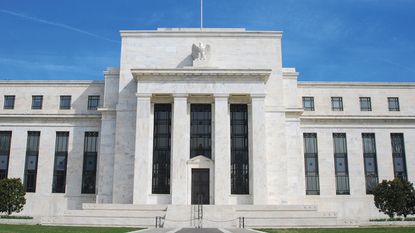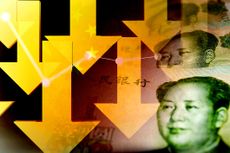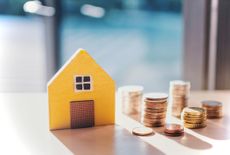Beware: inflation is starting to stir in the US
With US consumer prices up by 1.4% in the last year, concern about inflation is now everywhere.

Investors are pencilling in higher inflation. US inflation expectations, as measured by the ten-year breakeven rate (the gap between the yield on the ten-year Treasury bond and the rate on its inflation-linked counterpart) recently went above 2% for the first time since 2018, says John Detrixhe for Quartz. That’s “not exactly Argentina-style hyperinflation”, but it marks a big increase since last March, when the breakeven rate slumped to 0.5%.
An inflationary spring
Renewed lockdowns mean that inflation remains subdued for the time being. The annual rate of consumer price inflation in the UK (CPI) is just 0.6%. In America consumer prices rose by 1.4% last month on a year before.
Nevertheless, concern about inflation is now apparent everywhere, from the bond market to business surveys, says Neil Irwin in The New York Times. The inflation numbers are bound to spike higher this spring because of statistical effects. Prices plunged when Covid-19 struck last year, so prices returning to normal will register as an inflationary leap in the year-on-year comparison.
Subscribe to MoneyWeek
Subscribe to MoneyWeek today and get your first six magazine issues absolutely FREE

Sign up to Money Morning
Don't miss the latest investment and personal finances news, market analysis, plus money-saving tips with our free twice-daily newsletter
Don't miss the latest investment and personal finances news, market analysis, plus money-saving tips with our free twice-daily newsletter
We are also likely to see sector-specific price surges. If everyone comes out of Covid-19 “hibernation” at once there won’t be enough restaurant tables and hotel rooms to go around, driving price hikes.
Some say an inflation spike will mark the start of a new trend. Advocates of that view point to structural changes in the economy, says Roger Bootle in The Daily Telegraph. Deglobalisation and an ageing population in major economies could shrink the available supply of labour over the coming decades.
Yet in the near-term, inflation will be driven by the demand side of the economy. 2020 delivered a “veritable explosion of the money supply”, with the UK M4 gauge of the money supply soaring by 13% over the past year. In the US M2 money supply has increased by 24%, a figure that would have sent 1980s monetarists into a “flat spin”.
Don’t count on the central bank
That money has found its way into the pockets of consumers, says Irwin. Between March and November Americans saved a staggering $1.56trn more than they did in the same period a year before. It won’t be long before that cash starts to leak out into the real economy. “When a bathtub is filled to the very top, it doesn’t take much sloshing for it to spill out on the floor.”
A few years ago, investors would have said that if inflation spikes, then central bankers would raise interest rates, preventing a more durable take-off , says Gillian Tett in the Financial Times.
Yet those old certainties have started to wobble. America’s Federal Reserve has already indicated that it is relaxed about inflation passing above the 2% target, just so long as it averages 2% over several years.
The vast debt loads that governments have accumulated fighting the virus also make raising interest rates politically difficult. Buckle up, says Randall Forsyth in Barron’s. There are already signs of “supply tightness” emerging in markets “from DRAM chips to ... commodities” (see below). As policymakers fight today’s crisis, “tomorrow’s inflation starts to stir”.
-
 Rightmove: Asking prices edge closer to record peak
Rightmove: Asking prices edge closer to record peakAsking prices have been driven up by the top-end of the market, Rightmove has found. But how does the situation look in your area?
By Vaishali Varu Published
-
 Coventry Building Society bids £780m for Co-operative Bank - what could it mean for customers?
Coventry Building Society bids £780m for Co-operative Bank - what could it mean for customers?Coventry Building Society has put in an offer of £780 million to buy Co-operative Bank. When will the potential deal happen and what could it mean for customers?
By Vaishali Varu Published
-
 Should your business invest in a VoIP phone service?
Should your business invest in a VoIP phone service?Here's what you need to know about VOIP (voice over IP) services before landlines go digital in 2025.
By David Prosser Published
-
 The end of China’s boom
The end of China’s boomLike the US, China too got fat on fake money. Now, China's doom is not far away.
By Bill Bonner Published
-
 What is the future of Royal Mail in the UK?
What is the future of Royal Mail in the UK?With fewer of us sending letters and parcels, the Royal Mail is finding dealing with the nation’s post is an increasingly unprofitable and costly business.
By Simon Wilson Published
-
 What's the secret of Manolo Blahnik's success?
What's the secret of Manolo Blahnik's success?Fashion maestro Manolo Blahnik shows little sign of slowing down at 81, and his company notched up a record financial year in 2022. What is the secret of his success?
By Jane Lewis Published
-
 Michelle Mone's "tough year of pain"
Michelle Mone's "tough year of pain"Michelle Mone liked to portray herself as a working-class heroine who worked her way to the top through grit and determination. But her pedestal is built on sand.
By Jane Lewis Published
-
 Trevor Milton, the Elon Musk wannabe, is jailed for fraud
Trevor Milton, the Elon Musk wannabe, is jailed for fraudThe former CEO of Nikola, Trevor Milton, has been found guilty of lying about the development of the company's electric trucks.
By Jane Lewis Published
-
 Directors should think twice before waiving limited liability
Directors should think twice before waiving limited liabilityShould small-business directors ever provide a personal guarantee in return for bank finance?
By David Prosser Published
-
 Why Russia's economy is doing better than predicted
Why Russia's economy is doing better than predictedSanctions were supposed to strangle Russia’s economy, but it seems to be thriving. What’s going on?
By Simon Wilson Published